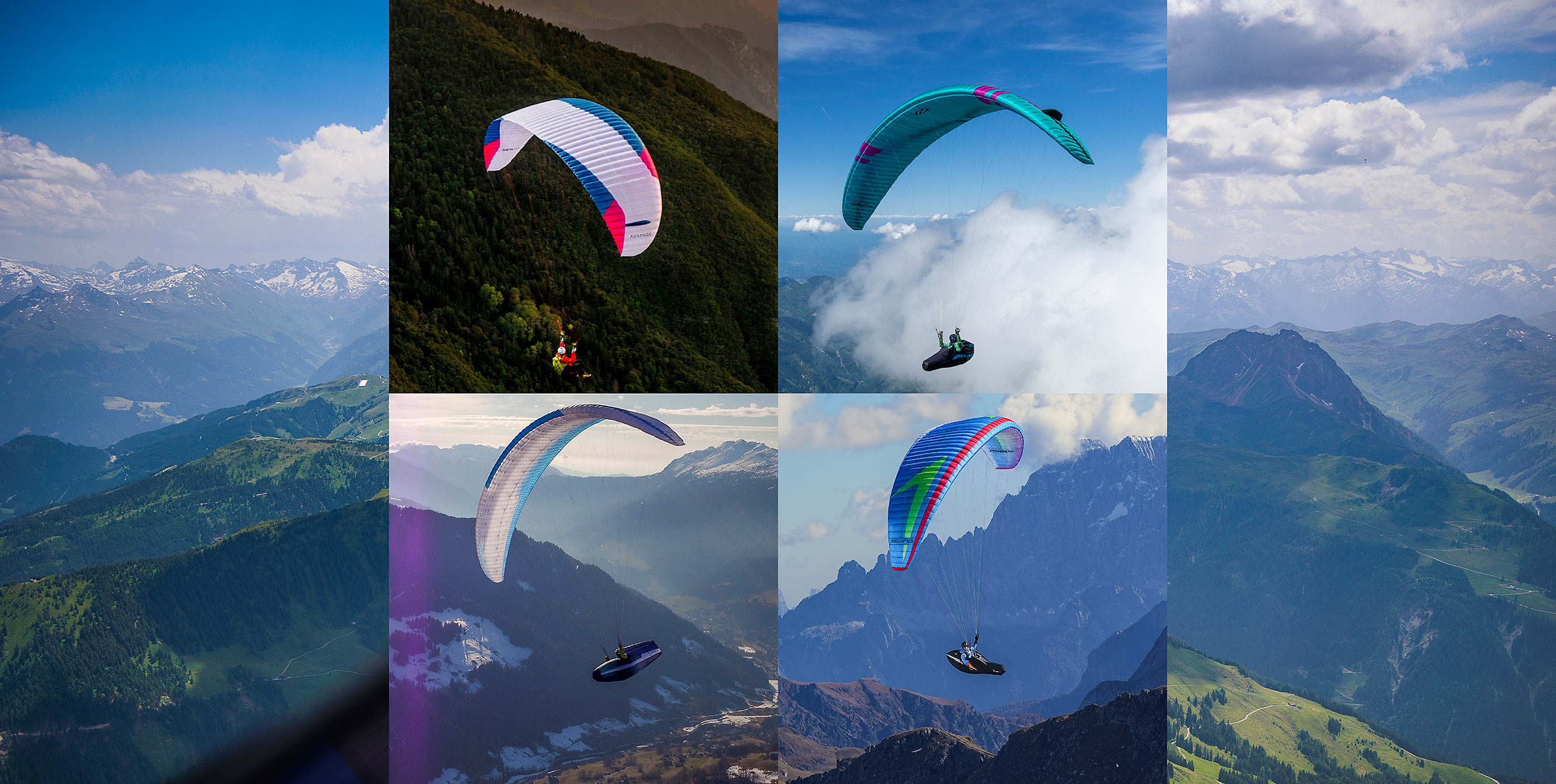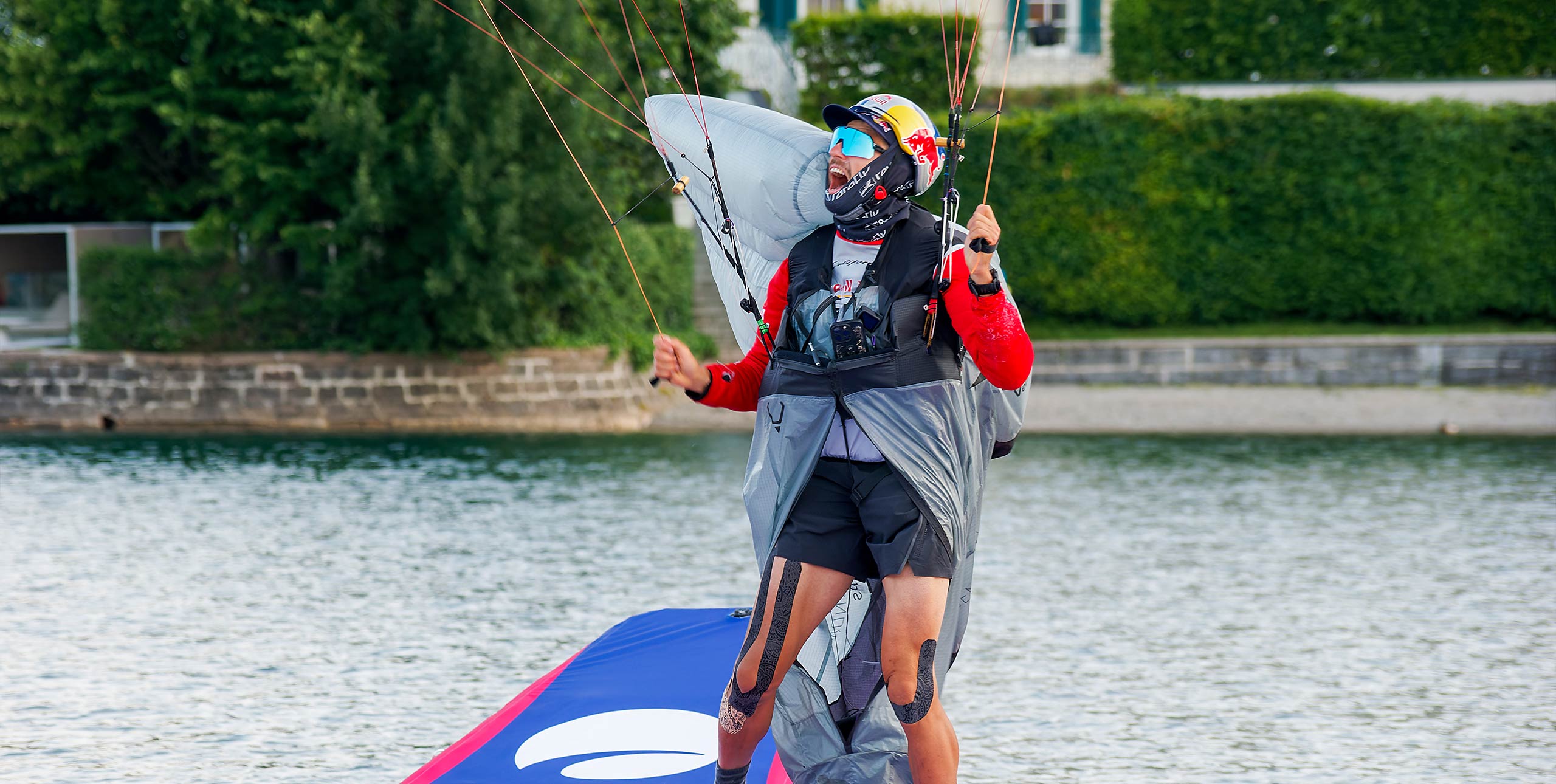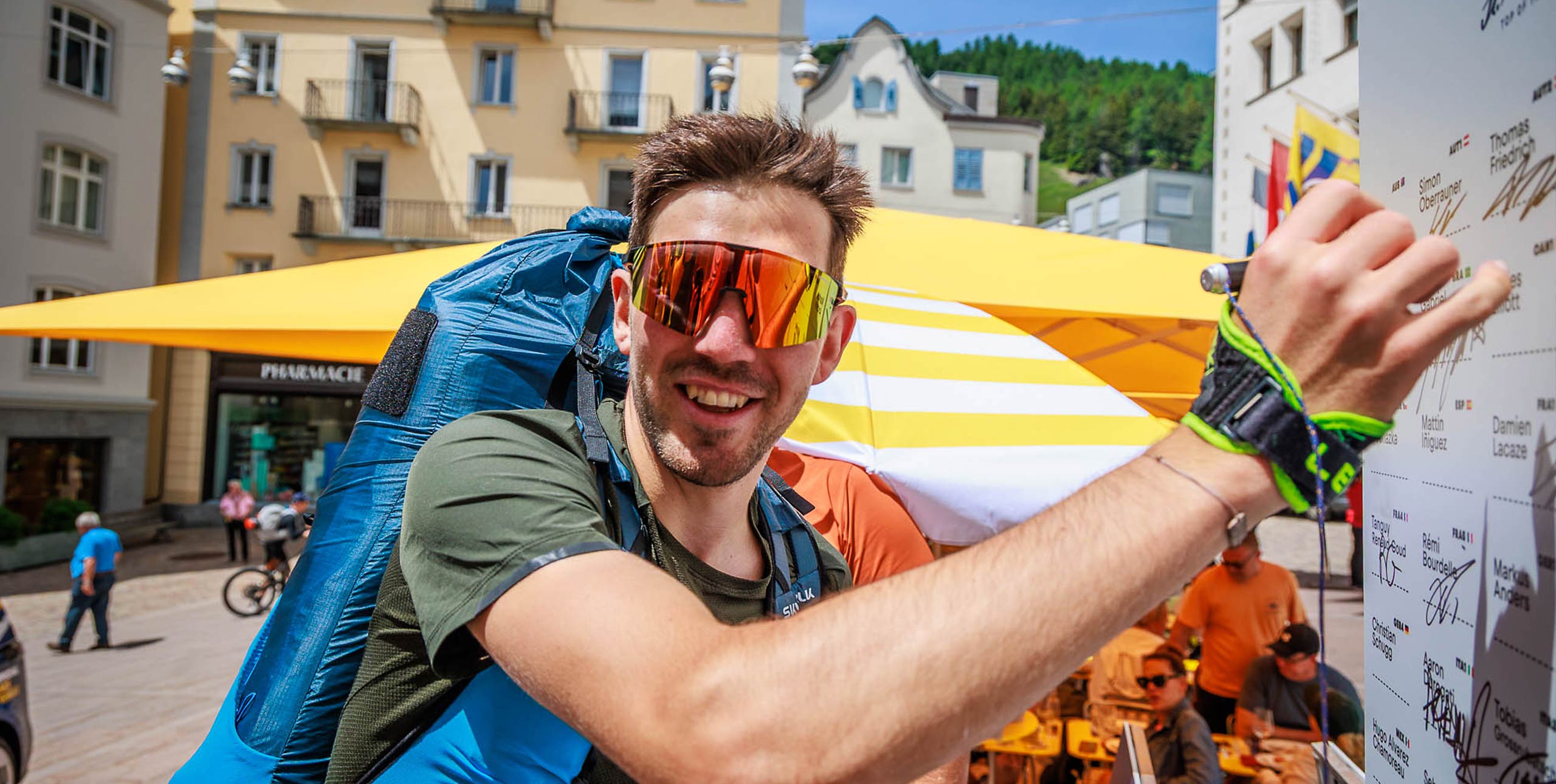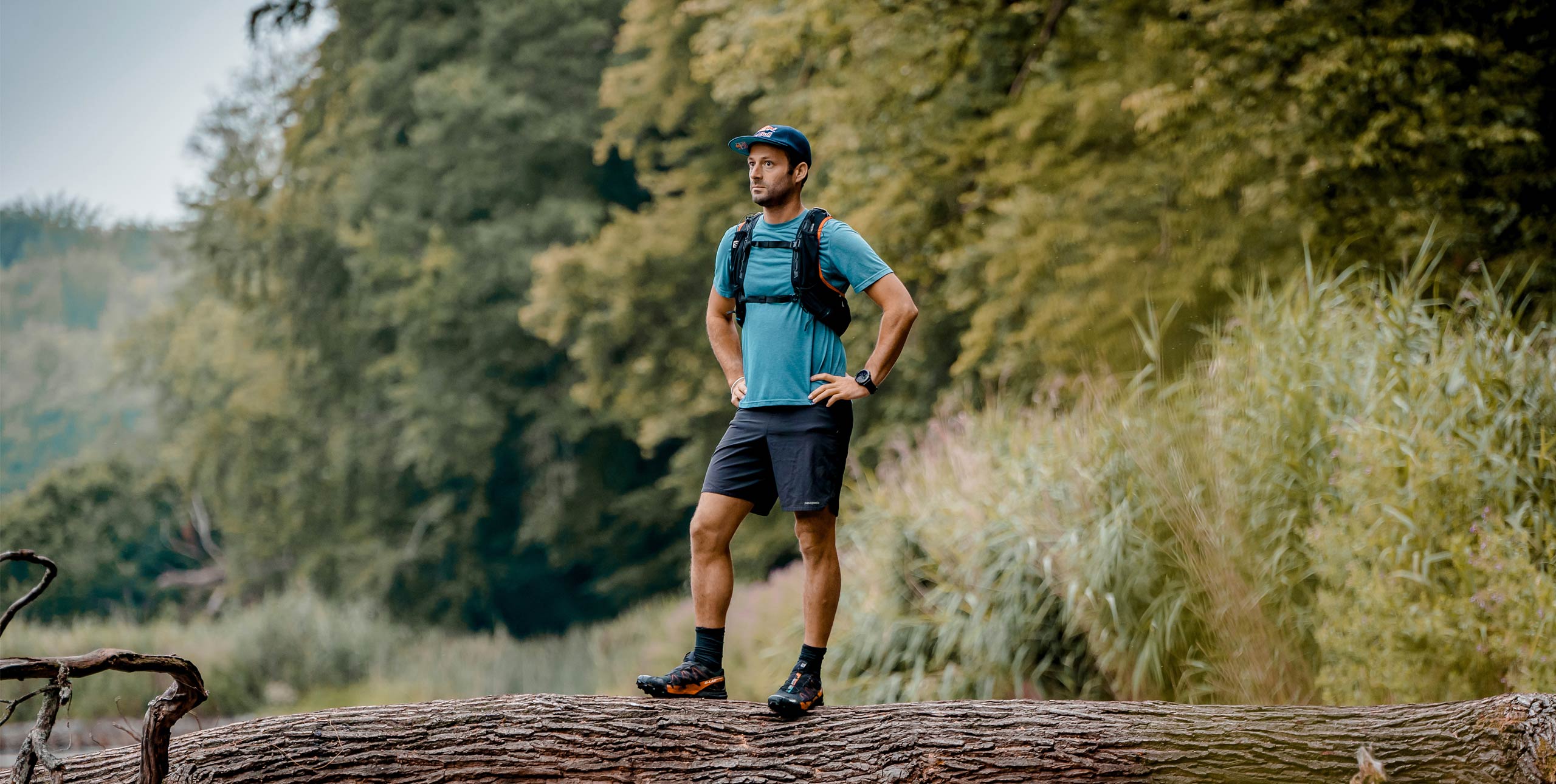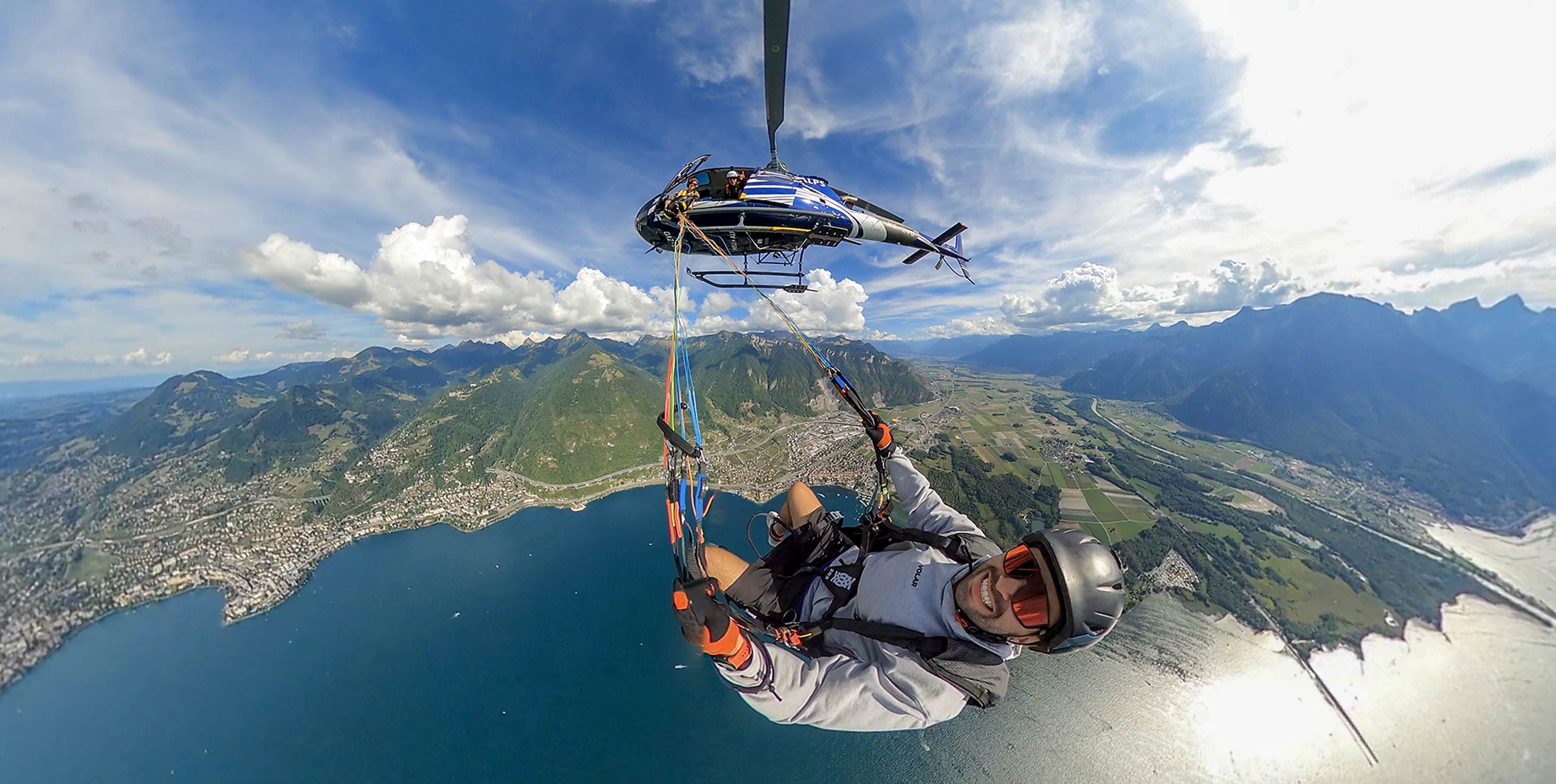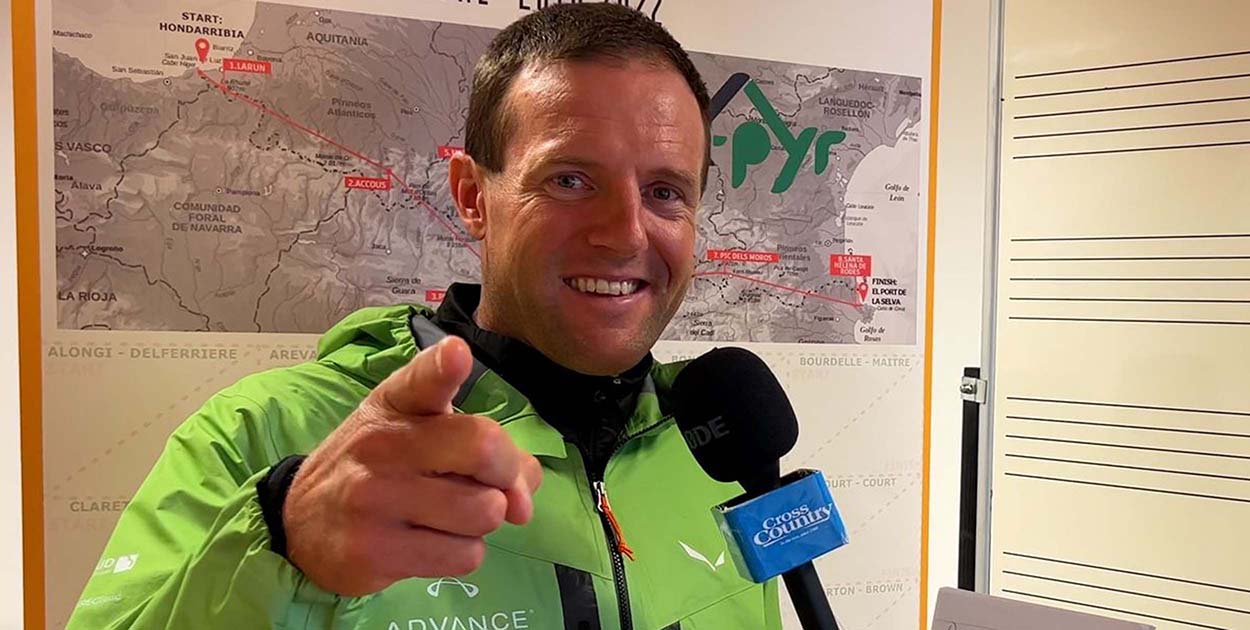
X-Pyr 2022: Chrigel Maurer – Interview with a Champion
25 June, 2022Ed Ewing talks in-depth to X-Pyr and Red Bull X-Alps champion Chrigel Maurer ahead of the X-Pyr 2022. Video production: Marcus King
Chrigel Maurer is the most decorated hike-and-fly adventure racer in the sport. A former FAI European Paragliding Champion, Paragliding World Cup champion, Acro world record holder, Swiss paragliding champion (multiple times) and even Swiss hang gliding champion, he won his first Red Bull X-Alps in 2009. Since then he has been unbeatable: he has won the Red Bull X-Alps seven times and the X-Pyr three times.
The afternoon before the start of the X-Pyr 2022 we caught up with him in the race HQ in the small Spanish border town of Hondarribia, where the X-Pyr starts. Outside, the rain fell steadily – and was forecast to keep falling for at least the next 48 hours. The weather was forecast to be bad-to-poor for the whole week, which, Chrigel suggested, might mean nobody will make goal this year, Chrigel said.
Here’s an edited version of the conversation between Cross Country editor Ed Ewing and Swiss paragliding legend Chrigel Maurer.
EE: Chrigel, the race starts tomorrow at 10am. How are you feeling?
CM: I feel good, thanks. Finally we’re here at the start. It was a long preparation, but I’m happy to be here and racing tomorrow.
Let’s dive straight in. What do you think of the X-Pyr route this year?
It’s a new route. It’s longer than ever before. We have a similar start, but we have a new X on the high area, and then a long final leg. It will be more difficult to cross the Pyrenees twice and then to go back west. It’s harder.
Also, the race is six days. At 605km long that means an average of 100km a day. The forecast is not so good, so I think it will be difficult to finish the race this year.
Your record for the X-Pyr is two-and-a-half days. What was the weather like when you did it that year?
The route was really direct and the weather was good. We had strong tail wind and we flew together almost 200km each day, one day more than 200km. It was just beautiful, and for me, it was a pleasure. But for those in the back it was really hard, because there was west wind coming in and for them it was a really hard adventure – because hiking in the sun is not nice. This year it looks like it will be raining for everyone. So it will be really hard to get to the place where the mountains start to be higher. We’ll see.
When the weather is bad the decision making can become riskier, can’t it? It becomes more marginal. How do you manage those decisions?
At the start I don’t really have a strategy to manage this, but after a while I get really, really into the adventure and I feel the conditions. I think only about the adventure and nothing else. Then it’s easier to feel what I have to do.
But when it’s windy, for example, when there is a thunderstorm coming, when there is foehn with strange wind, it’s always stressful and it’s never easy to find a good solution. And then I have to go step-by-step.
But then there is the point at take-off when I inflate the glider – and then that is not the place to say “I try”. It’s more the point to say, “I have to”. And then, yeah, I realise that it’s not funny anymore. But I do really serious training, to know what I can do, and there is a limit.
There are 32 rookies in the race this year. Have you got any advice for them about how to approach a big race like the X-Pyr?
It’s more an adventure than a race. The difference is that the goal is to keep going all day and not to push so hard you crash. It’s hard to start a long adventure where it is raining at the start, where the weather is bad. After one or two days it feels like it’s never ending. Then you need to have a good goal each day, each hour, each moment. This is important. And to have a good time with the team as well, to make jokes and see the nice places in the route, this helps. If you focus to be faster than the others, it’s really hard.
It’s also hard for me this year because the last three editions it was all about flying. This time it’s more about managing myself to not overload my body, to not make mistakes with strong wind. And this will be more difficult than even before.
You mention your body. Can you tell us a bit about your health statistics? What’s your resting heart rate, for example?
I’m 40 now and for the last 12 years I have really trained a lot. I’m getting better and better. For example, for 1,000m of ascent I am one-and-a-half minutes faster than last year. So for me, that’s a good sign.
I have a new coach, Ramon Krebs, and he pushed me this spring to get better. And I feel really good. But there is also the danger that I go too fast and hurt my legs. So I have to be careful.
My resting heart rate is above 50, and my maximum is 188. Twelve years ago I was 55 and 208. But what is important is the average at a good speed. For example, I can push 1,000m at an average of 125bpm and I can do this all day. I have improved from 700m an hour to 1,000m an hour in the last 10 years. My recovery is also better.
So you’re getting stronger and your recovery is getting better. That’s amazing. You’ve been doing this for 20 years? What still drives you? You’ve won most things. What’s the motivation?
I feel just happy to be out in nature and flying. I feel totally free, and it gives me all the time a good feeling. Competition pushed me to getting better and better in training and then in the competition I see how it works. And I have a good time with my friends and teams. And it never ends.
Looking back, all those wins. What do you say to the pilots who are coming up now?
I feel really happy to see the sport growing. I’d say it’s a combination of three sports, and it’s not just about you the pilot, it’s about the team. It’s a really interesting game to see which tactics, which strategy works best, it’s not just flying and pushing, it’s also thinking about the next days, about food, about recovery, about materials – everything.
You’re sort of an elder statesman now, a real mentor. Someone told me that when you were in Dubai last year at the Dubai Hike-and-Fly, you were the one that came up with some extra guidelines to help keep everyone safe. Everyone was meant to run to the top of the building and launch. And you were the one who said, “Hang on, let’s stop the time so people don’t get forced into launching too quickly.” My question is about leadership – does that position of leadership come naturally to you, do you welcome it?
In general, I am an athlete by myself and I push my own limits. On the other side I see the sport. We have to be smart in what we do for competitions. If I feel a competition is too dangerous I can ask the pilots what they think. And what happened in Dubai was that the competition was in this new area and in this building. So I was looking for a solution to make it more safe, so it could happen without problem.
Can I ask about the Red Bull X-Alps from last year? Congratulations on your win! It was one year ago now. Looking back on it from a distance, what do you think? How do you feel about the race? The pressure that you and the others were flying under looked intense.
Like now with the X-Pyr I thought that the route was too long for the time we had. We had 12 days, which looked a bit short. The beginning was not so fast, and then the half part was quite difficult. The weather and everything. But then the last three days was very fast because of the good weather, and I was surprised to finish finally that fast.
But it shows also that the other teams are becoming more efficient. There were more and more teams out front, pushing, changing positions. But finally there was one big difference, on day eight where one line was straight, in the south, and there was this other line to the north.
For me it made more sense to make the detour north because it looked more flyable. I did not really know because of the weather forecast or the area, but I had a better feeling than the south.
Nobody else saw it.
It was not clear, that was the problem for me. I also wanted to go south because it made more sense, it’s straighter. But in the end it was just a feeling. There were small factors which led me to the decision, but it was also a god part of luck.
A good part of luck. In paragliding the ability to deal with success and the ability to deal with failure are two sides of the same coin. It’s a real mental skill, to manage your emotions. You clearly have found this balance in this mental game of success and failure. Who else do you know who has it, do you think?
It’s difficult to see what they see or to feel what they feel because most are focused on the result, on pushing on, on giving their best. If things work, they feel good because they made it good. If they fail, they say the conditions was bad or there was bad luck.
For me, it was always when I was good, I felt okay, the decision was good. But I could also look and if I made a mistake, then I could say, okay I made a mistake. For me it helps to be clear with myself to say, “Okay, when I did good, I’m happy for me.” And if I made the mistake, I say, “I’m sorry for myself, but I can improve.”
It’s always very close. Success and failure and how you deal with them. If you know that performance goes up and down all the time, and if you have a plan B for this, then it’s easier. But a good pilot does have to push and to be unhappy with themselves to become a better pilot. If you are happy with failure you will stay in the middle. So I like young pilots who are frustrated after a failure, because I know they can cope with it.
We just saw Aaron Durogati, an X-Pyr and X-Alps veteran too, fly a 285km triangle in Pakistan. Other friends of yours are going out to Pakistan now, hoping to fly above 8,000m, above K2. These are incredible venues, amazing adventures. As far as I know, you’ve not been out to the Himalayas, to the Karakorum. Is there a part of you that wants to and is there a reason why you haven’t?
I feel that I can do a lot of things with my paraglider, and I can do this at home or in the Pyrenees and not have to travel so far for sure. Pakistan is higher and it’s more extreme for sure. But for me that is not really what makes the difference. I am really happy and satisfied when I have a good flight in my area or I can overfly a nice peak like the Matterhorn. It makes me happier than travelling around the planet, and you know I have to think of my family and what they want too. In flying I had a lot of dreams, which I have already made real, and you know, the Himalaya was never really a dream.
What dreams do you still have in paragliding?
To win the X-Pyr 2022! No, I really want to be happy with setting new goals, to feel motivated, to stay healthy and to spread this spirit in the scene. To help young people, and encourage them so they can learn to do this without danger, which we have in paragliding. And yes, to competitions, because for sure, this will be my fourth X-Pyr, but it will be a new experience. This makes me happy I think.
And the Red Bull X-Alps next year?
I say let’s finish the race here first, then I have to speak with different people about my team, how I can organise financial parts and everything like this. But this is my goal. And then the application, and I hope to be selected in autumn.
What you flying this week at the X-Pyr? What’s your equipment?
Advance is working hard on the new Omega X-Alps 5 already, but I still bring my Omega X-Alps 3. It’s already my fifth glider! It’s already five years old, but it’s my fifth one. It works well in my size, and I really know what I can do with it, the limits.
In general there is a limitation in this compromise of lightweight gliders and good performance. You can see in other companies that they can’t do it so easily with new gliders. You have to win by different tactics now, it’s difficult to do it with the glider.
I will say that Advance is a really good company, for sure. They have a good range of gliders and harnesses.
Finally, what’s your plan for tomorrow? We all have to be on the beach at 8.30am, then the race starts at 10am. How long will it take you to get to the summit of the first turnpoint?
It’s around 2hr40 to 2hr50 minutes. It’s 18km flat and then the climb of 900. What happens after that is the big question. If we can fly down for sure it’s a flight and then it depends on the cloud or the rain.
I think tomorrow will see more walking than flying. Then we have to decide are we going more north in the flat or into the hills to go up and down? If it looks a bit flyable, we go in the hills, try to fly some flights. If it looks cloudy and raining, it’s more likely we will follow the main roads on foot. But it will be a long day walking. And then Monday also looks bad.
My personal goal is to be on the second turnpoint on Monday, but it’s 150k to walk and around 4,000m up and down to the second turnpoint. So it’s already really a lot. And for me it’s not clear how much sense it makes to push so hard, but it could be good to be on the south side on Tuesday, when it looks flyable.
Ok. Well, listen, thank you very much for your time. It’s been great, as always. Have a fantastic race, a safe one, and I hope to see you at the Mediterranean in a week.
Yes, I hope to have a swim in the Mediterranean Sea as soon as possible! But maybe this this edition will be hard. But we go step-by-step, starting tomorrow at 10am. See you there live!


